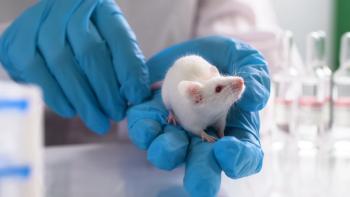
- April 2017
- Volume 2
- Issue 2
Exotic Animals: Getting the Most from a Patient History
A host of factors can be at play when an exotic animal falls ill. Knowing what questions to ask in the patient history is key to making an accurate—and often life-saving—diagnosis.
For veterinarians, working with dogs and cats that can't talk is challenging enough. But for veterinarians who work with exotics pets, it’s even worse. Exotic animal veterinarians must be versed in the care, diseases, and treatments not only of two species but of dozens of species that have different anatomies, nutritonal and environmental requirements, and illnesses. To complicate matters further, the individuals bringing the sick small mammal, reptile, amphib- ian, or bird into the animal hospital often aren’t the pet’s main caretakers, so it’s not uncommon for them to have little to contribute to the patient history.
Obtaining a complete history on an exotic pet is key to diagnosis, as inappropriate diet, environmental setup, or even behavioral interactions with humans and other pets can contribute to the problems these animals develop. To obtain the most information possible about a sick exotic pet, asking the right questions is paramount. Following are lists of questions, organized by animal type, that a veterinarian treating an exotic pet should be asking to get as comprehensive a patient history as possible. Also included is information about why the questions are relevant and how the answers may reveal clues to the cause of the animal’s illness.
These questions apply to owners of rabbits, guinea pigs, chinchillas, hamsters, gerbils, rats, mice, and ferrets.
How long have you had the pet? Many small mammals are late-in-life rescues.
Where did the pet come from? Small mammals from pet stores often have infectious diseases associated with poor housing conditions and overcrowding.
Has the animal been boarded around other animals recently? Again, think infectious diseases.
Why do you think the pet is ill, and when did you first notice a change? Remember, some small mammals, such as rats, mice, hamsters, and gerbils, live only 2 to 4 years, so a few months is a long time in these animals’ lives.
What food is the pet offered, and what does it actually consume? Most small mammals eat too many pellets and not enough fresh produce and hay (critical for rabbits, guinea pigs, and chinchillas).
What treats does the pet eat? Many of these animals eat too many sugary or fatty treats.
What percentage of its regular diet is the pet eating? Many owners have trouble answering this, as these animals’ food is often strewn around the cage.
Is the pet given supplements or vitamins? Guinea pigs, for example, all need supplemental vitamin C to stay healthy.
Does the pet get fresh water every day? From a bowl or sipper bottle? Owners often forget to change water in the bottles or let the bottle run out of water completely.
How active is the pet? Many of these pets, such as some rabbits and guinea pigs, are relatively sedentary, so it is difficult to tell when they are lethargic.
Is the animal passing normal stool? Most herbivorous pets pass large numbers of formed fecal pellets. Lack of pelleted feces or smaller fecal pellets can indicate reduced food consumption.
What is the size of the pet’s cage, and where in the house is the cage? Small mammal owners don’t always look at their pets every day.
Does the pet live alone, or does it have contact with other animals? Some diseases are transmissible between species, such as Pasteurella spp bacteria and Bordetella spp bacteria in rabbits and guinea pigs.
Is the pet neutered or spayed? More than 70% of unspayed female rabbits develop uterine cancer after age 3 years, and unneutered male rabbits notoriously spray urine.
Does the pet chew on anything inappropriate? Small mammals are very oral, constantly chewing inappropriately on wires, paint, baseboards, and foreign objects.
Other questions to ask small mammal owners include:
• What type of bedding is in the cage? In the litter pan?
• How often is the cage /bedding/litter changed?
• How much time does the animal spend outside the cage?
• Does the pet have past medical problems?
How long have you had the pet? Many birds, especially large parrots, live for decades and are passed from generation to generation within families, so current caretakers may not be aware of the bird’s history.
Where did the pet come from? Like small mammals, birds from pet stores often have infectious diseases due to poor environmental conditions and overcrowding.
Has the bird been exposed to other birds in the past few years (eg, through boarding or grooming visits to the pet store)? Birds housed near other sick birds commonly pick up infectious diseases, and the incubation period for some of these diseases can be as long as several years.
Do you know the bird’s gender? Some species of birds are sexually dimorphic, but many are not. Unless a bird has laid an egg or has been sexed through DNA analysis of a blood sample, gender may be unknown.
What does the bird eat? Many birds eat either an all-seed diet or a combination of people foods that ultimately don’t add up to a balanced diet. Formulated pellets are the best for birds.
Does the bird get treats? Many birds eat way too many salty, sugary, fatty treats and not enough pellets.
Does the bird share your food? People’s mouths contain gram-negative bacteria and yeast that are not part of bird’s normal flora and can cause oral and gastrointestinal infections if transmitted through shared food.
What percentage of its regular diet is the pet eating? Bird owners often can’t answer this, as birds are very messy and waste much of what they are given to eat.
Does the bird chew on anything inappropriate? Parrots, with their large beaks, chew everything in sight.
What is the cage like? Many older birds live in old cages painted with powder coating that contains zinc.
Where in the house is the cage? Birds housed in the kitchen are often exposed to toxic fumes and smoke.
Does anyone in the house smoke? Birds exposed to second-hand smoke can develop respiratory problems, and nicotine on an owner’s hands can be transmitted to a bird’s feet when the bird perches on contaminated hands. Birds can ingest nicotine from preening smoke-coated feathers and can develop skin irritation from nicotine on their feet.
Are the bird’s droppings normal? Many owners describe diarrhea when they actually mean polyuria. The stool is the solid green/brown part of the dropping, while the white is solid urine (uric acid) and the clear liquid is urine. Excess urine can be indicative of kidney problems.
What is on the cage bottom? Corn cob bedding notoriously breeds fungus when moist and can lead to birds inhaling toxic fungal spores.
Does the bird have any past medical problems? Large older parrots may have lived in several homes over their lives, so current caretakers may not know past medical history.
Does the bird bathe? Many birds not exposed to water develop dry skin and may pick at themselves.
Is the bird exposed to ultraviolet light? Direct ultraviolet light exposure (unfiltered by a window) is critical to vitamin D formation in the skin of birds and proper absorption of dietary calcium.
Has the bird ever laid an egg? If so, when was the last time, and was the egg normal? Birds don’t have to be mated to lay eggs, and reproductive problems are very common in female birds.
Does the bird listen to TV or radio? Many birds sitting unstimulated in their cages get bored and develop behavior problems as a result.
Does the bird fly? Many large birds remain sedentary in cages, get little exercise, become obese, and develop high cholesterol.
The following questions apply to turtles, tortoises, lizards, snakes, toads, and frogs.
What is the pet’s tank/cage setup like? Many illnesses in reptiles and amphibians result from inappropriate husbandry, so getting a thorough description of the animal’s environment is key.
What is the tank/cage temperature? Reptiles and amphibians are ectotherms whose body temperatures (which affect metabolism and immune system function) are determined by their surrounding temperatures.
Does the animal have ultraviolet light exposure? Most reptiles need ultraviolet light to produce active vitamin D in their skin; this is necessary for dietary calcium metabolism.
What is the humidity in the tank/cage? Depending on the species, reptiles and amphibians need adequate humidity to stay hydrated and to shed skin properly.
How is humidity provided? Do you soak or mist the pet or provide a humid hide box? Reptiles require a certain level of humidity in their enclosure.
What is the pet’s diet? Some reptiles and amphibians are carnivores, whereas others are herbivores, omnivores, or insectivores.
Does the pet receive any kind of supplements? Many reptiles and amphibians need supplemental vitamins and minerals, such as calcium.
For aquatic species, is there a filter in the tank? Filters are key to keeping tanks clean.
What is the bedding in the tank/cage? Many people use inappropriate bedding (eg, sand, walnut shells) that is indigestible when consumed and that can lead to gastrointestinal tract obstruction.
What is the heat source in the tank/cage? Heat sources include over-the-tank heat bulbs, under-the-tank heat mats, and heat rocks (not recommended).
Does the pet live alone or with others in the tank/cage? Infectious diseases can be spread from pet to pet and across species.
Does the owner check the quality of the water provided in the tank/cage? It’s important to check variables such as ammonia, pH, nitrates, and nitrites to ensure that they are within safe levels.
By no means are these lists of questions exhaustive, but starting here can help veterinarians who work with exotic animals learn more about the individual patients they are treating and whether the pet’s environment, diet, or husbandry could be contributing to its illness. The answers to these questions can help guide the plan for diagnostic testing and may be critical to determining a pet’s cause of illness.
Dr. Hess (
Articles in this issue
over 8 years ago
A Novel Quantitative PCR Assay Improves Detection of Babesiaover 8 years ago
Heartworm-Associated Respiratory Disease in Client-Owned Catsover 8 years ago
Update on Pituitary Pars Intermedia Dysfunction in Horsesover 8 years ago
WVC 2017: End-of-Life Care at Its Best - Part 1over 8 years ago
Making One Health a PriorityNewsletter
From exam room tips to practice management insights, get trusted veterinary news delivered straight to your inbox—subscribe to dvm360.






